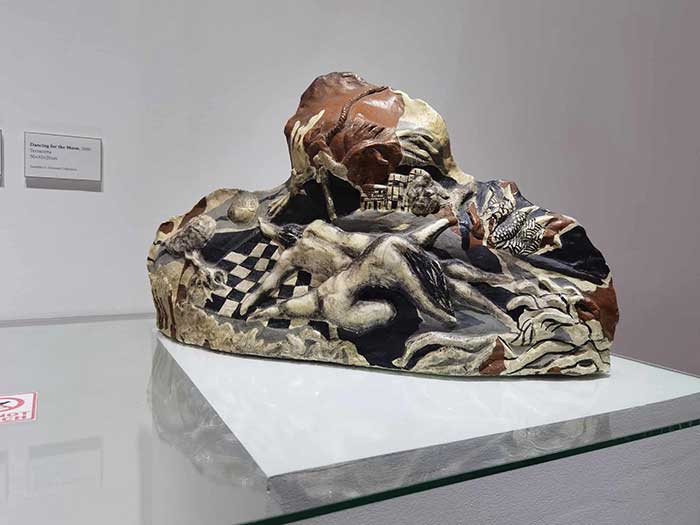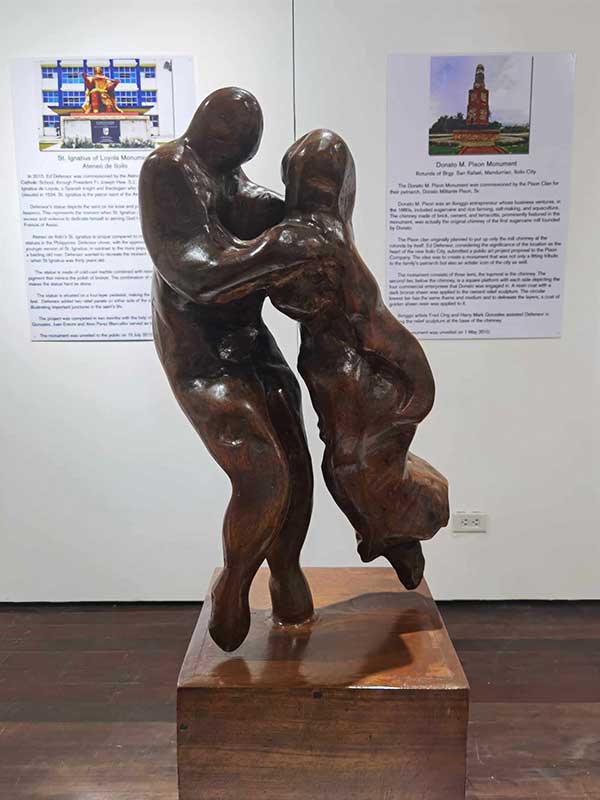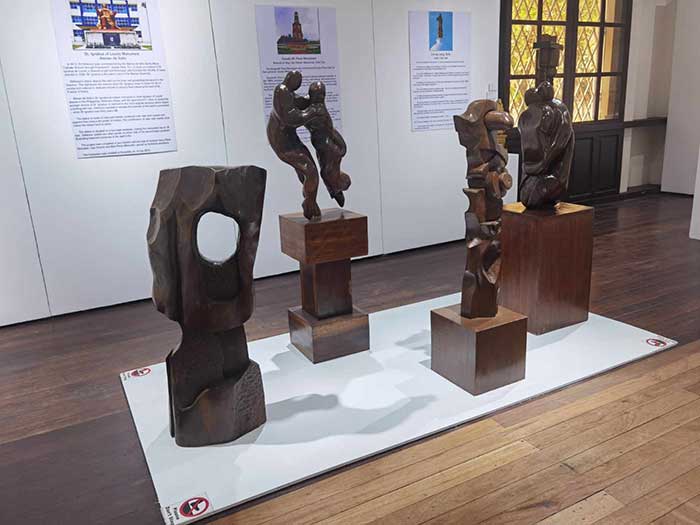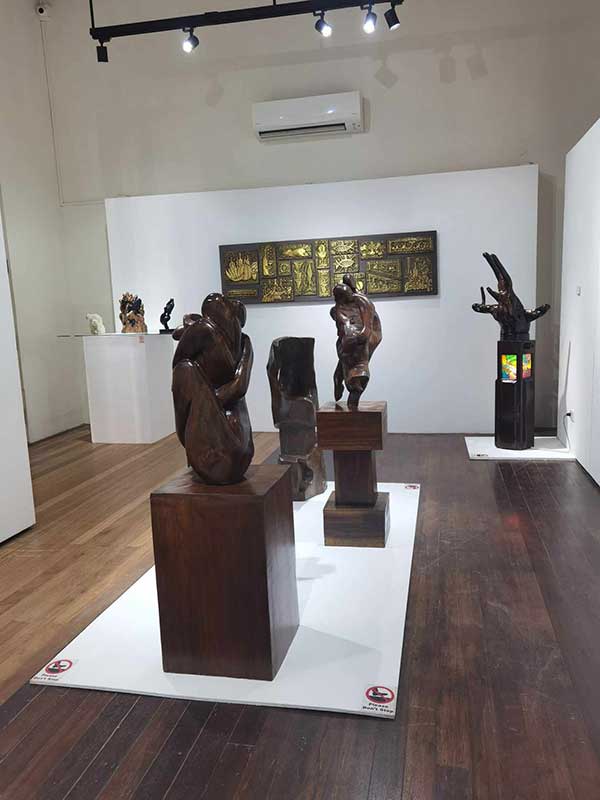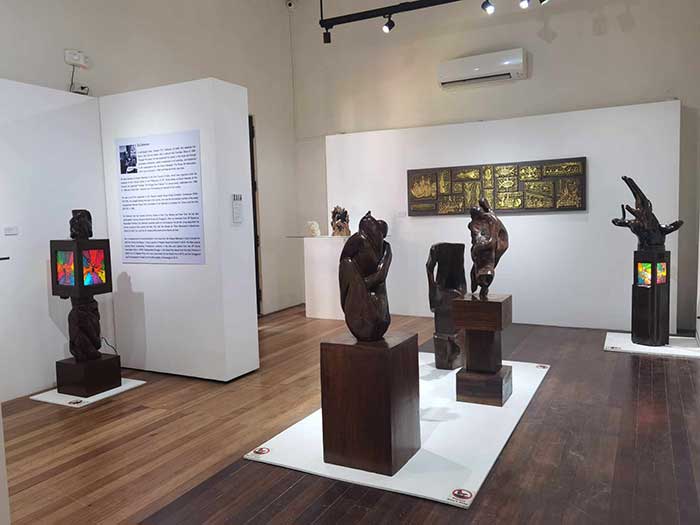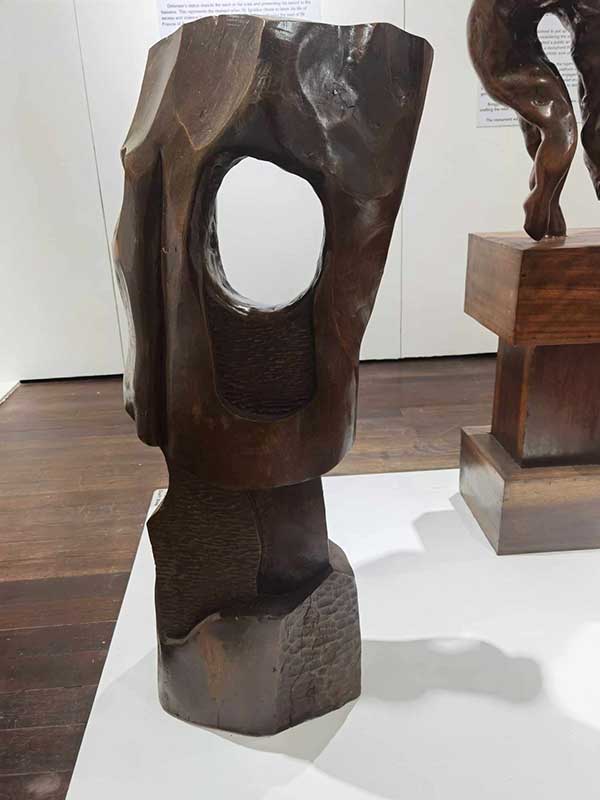By Martin Genodepa
The grain of wood, the sheen of metal, the grittiness of clay or stone – all referring to textures or “súpat” in Hiligaynon – must have so fascinated multi-media artist Ed Defensor to test his mettle in sculpture, a sampling of which are currently exhibited at the Ed Defensor Gallery of the UPV Museum of Art and Cultural Heritage.
As one of the key artists during the surge of interest in the visual arts in Iloilo in the middle of the 1970s through the middle of the 1990s, Defensor is more known for his paintings. But only a few know that he is also a sculptor and was most productive in the role from 1998 until early part of the new millennium.
His affirmation as a creator and designer of three-dimensional artworks came, although rather belatedly, when he received commissions to do public art – the Donato M. Pison Monument (2010), the Lin-ay sang Iloilo (2011), and the St Ignatius of Loyola Monument in Ateneo de Iloilo (2015).
The limitless possibilities of what he could create with wood, brass, bronze, clay, cement, stone, and resin could have been a challenge but also strong lure for Defensor to do sculpture.
But the oeuvres Defensor, whether paintings or sculptures, as a whole cannot be classified into one category. Never a slave to style, technique, or medium, Defensor has always been attentive and receptive to the accidents of his feelings and the stirrings of his mind.
In this exhibit titled Supat in the UPV MACH, Defensor’s earliest free-standing sculptures – Untitled and My Erotica, both made from native lumboy wood and done in 1982 – are abstract pieces that play with internal and external spaces. These works have strong elements characteristic of the modernist period, the key figures of which, to name a few, are the Romanian Constantin Brancusi, the English Barbara Hepworth, including the Filipino National Artist Napoleon Abueva.
The subject of his figurative sculpture, however, echo his early paintings of rural folks or peasants. The bronze Lin-ay sang Iloilo that crowns the new Iloilo City Hall and the Pison Monument in San Rafael Mandurriao belong to this group. Images of these sculptures are reproduced for the exhibit along with relevant information about their creation.
When Defensor ventured into making terracotta sculpture in the early 2000, he just continued his environment-themed Dancing for the Moon series of paintings using another surface. The shapes and protuberances of the baked clay that the artist formed are enhanced by either using high gloss epoxy paints or oil. As they are, the rather static terracotta forms owed their dynamism to the molded and painted images. In fact, if one had previously seen the paintings on canvas rendition of the series, the terracotta versions, likely also because of its three-dimensionality, would seem to be more vibrant.
Most of Defensor’s sculptures are semi-abstractions that are explorations in form and figure, also translated as “súpat” in Hiligaynon.
His rendering of the human figures in sculptures like Barter of Panay (1977, brass relief) or The Dancers (1999, resin maquette) are reminiscent of the later paintings of Matisse. His Mother and Child (1994, coral stone with emulsion paint), Folk Dancers (1998, kamunsil wood), Pas De Deux – The End (1998, unknown Philippine hardwood), the Dance Lantern series (1998, wood, glass, and acrylic), Fire Dance (1999, copper nails on wood coated with resin) also attest to Defensor’s bias towards semi-abstraction. These works are mostly closed shapes that betray in variedly the artist’s near obsession with the inner humanity of people. This inherent internality of Defensor’s sculptures encourages the viewer to be introspective and cerebrate more than to celebrate.
That “súpat” is used for both form and texture aligns, in a sense, with Marshall McLuhan’s idea that the medium is the message. In art, the medium potentially shapes the message, dictating the expression’s form or figure.
An artist’s proficiency is established when his choice of medium and the ensuing form that he creates from it arouse no feelings of incongruity. This consonance between medium and form is something one may experience when looking at the sculptures by Defensor.






















